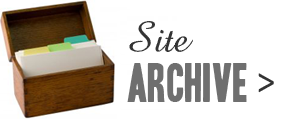| In the previous article, guest writer Chaturvasi took us through the process of creating a crossword grid. In this post, he describes how to number the clue slots in the grid. |
In the previous post we set a crossword grid from scratch, but clue-numbering remained to be done.

Here let's see how it is done.
Of course, there is no mystique about clue-numbering and any regular solver would know how it's done. Yet in crosswords published in small-time magazines in India I have seen many amateur setters not sticking to conventions. They number all Across clues sequentially and then the Down clues. Numbering in crosswords published in Indian language newspapers can be even more confusing.
The accepted practice is to start from the first blank cell and sequentially number all slots, whether Across or Down, where a solution word starts. Where the first letter of an Across word is the same as the first letter of a Down word, only one number is given.
Thus in the grid that we set, the first number will be in a1 (which is common for an Across word and a Down word).
Number 2 goes in c1, 3 in e1, 4 in g1. (These three are only Down words.)
Number 5 goes in i1 (the same number applying to the Across word as well as the Down word.)
While numbering, we should take care that we don't miss any cell that is in the perimeter or hemmed in by blocks elsewhere. (See a6, e8 or k10.)
After due numbering, the grid will look like this:

Related Posts:
- Make Your Own Crossword Grid: How to make a 15x15 blocked crossword grid without any software
- How To Put Words Into A Crossword Grid: Tips for crossword setters on filling up the grid.
- How Many Words In The Grid?: Quickest way to count number of clues/words in the crossword grid.
If you wish to keep track of further articles on Crossword Unclued, you can subscribe to it in a reader via RSS Feed. You can also subscribe by email and have articles delivered to your inbox, or follow me on twitter to get notified of new links.








 Follow on Twitter
Follow on Twitter Join us on Facebook
Join us on Facebook Get RSS
Get RSS

0 comments
Post a Comment